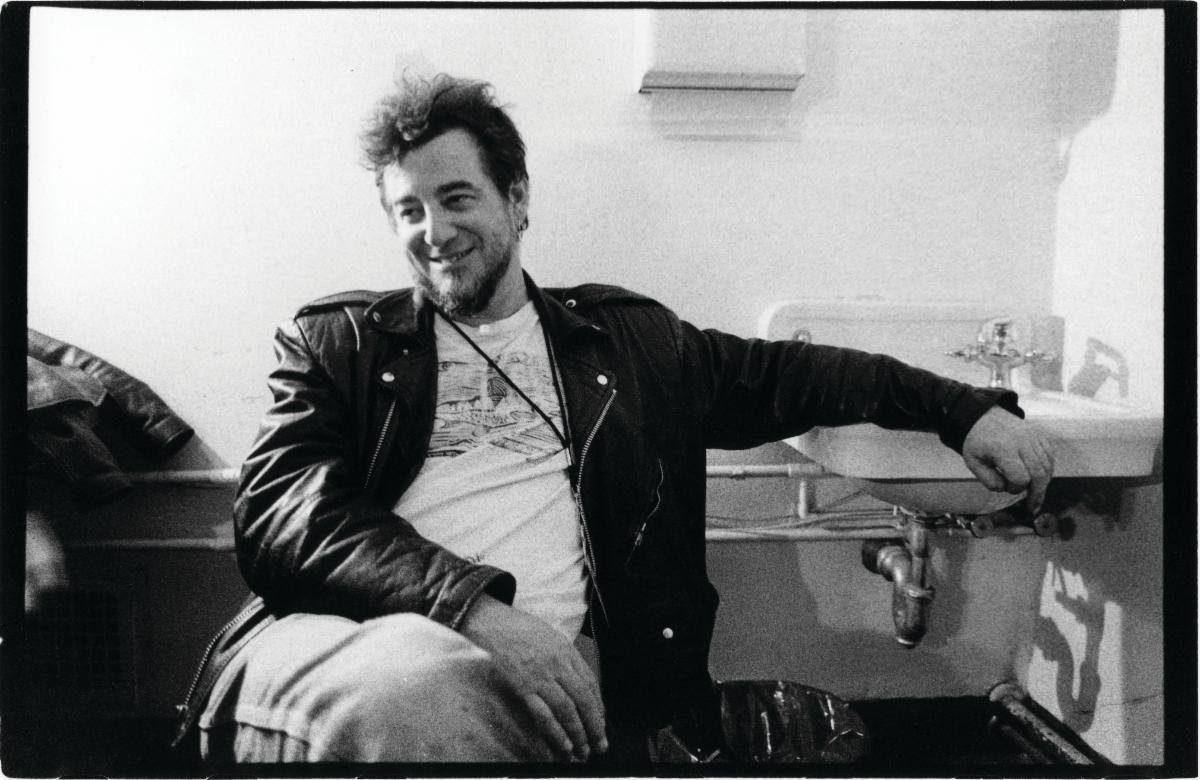THE READING ROOM: Greg Brown on the Power of Care, the Intimacy of Art, and His New Songbook

Greg Brown (photo by Sandra Dyas)
If it hadn’t been for Gerde’s Folk City’s Johny Porco one day in 1969, Greg Brown might have headed home from his adventure in New York City, where he had gone to try to make it as a folk singer. In the opening story of his just-released Ring Around the Moon: A Songbook, he regales readers with the tale of his arriving in Greenwich Village with his guitar, a bag of books, and a couple of hundred dollars in his pocket.

After Porco tells Brown he’s hired and can start the next night, Brown heads out to Far Rockaway, splurges on some clams and drinks a beer, then falls asleep on the beach and misses his first night at Gerde’s. He knows he has lost the job, but he has to head back to the club to pick up his guitar. When Porco confronts him and tells him he’s fired, Brown tells him his story about living on the streets, not eating, and then falling asleep on the beach. Porco calls for the cook to bring Brown a big plate of spaghetti.
Gerde’s is opening in a new location soon, Porco tells him, and Brown can have a day job cleaning the place and a room on the second floor to sleep in.
“Just shows how much effect one person can have,” Brown says in an interview for this column. “I was saying, ‘Well, to hell with this,’ and I was walking away. Johny came after me and said, ‘Come on, we’ll take care of you.’ If he hadn’t taken care of me, I might have been running a paint store.”
Thank goodness for Porco, of course, since Brown went on to fill our world with memorable songs such as “Your Town Now,” “Canned Goods,” “Two Little Feet,” and “Spring Wind.” His songwriting and storytelling transfix with their intimate, humorous portraits of people, time, and place — all prefaced by a foreword by Seth Avett, who recorded a full album of Brown’s songs, Seth Avett Sings Greg Brown, in 2022 (ND story).
Maybe it was inevitable that Brown would have made a life in music. He grew up in southeastern Iowa in an area affectionately known as Hacklebarney. He writes about being in his grandpa’s house — which came on the train from Sears in 1901 — when he was 6 years old and the house being filled with relatives playing all kinds of instruments and singing most of the night.
“A lot of the folks in that region came from Appalachia,” Brown says, “and they brought that music with them.” Brown started out on the ukulele, but he learned to play on an old Gibson single pickup guitar. In his book, Brown offers up a little story about his mom and the jams in Hacklebarney: “My mom started playing when she was pretty young … and she taught me the basic chords. There were a lot of jams at Hacklebarney. There was a guy named Buzz Fountain who played fiddle. Oh, God, there were so many musicians down there. Uncle Roscoe played guitar. My Uncle Frank played mandolin.”
In 1986, Brown started Red House Records. He decided he wanted to make a record where he set William Blake’s poems to music. “I asked Bob Feldman, who ran Red House, to send the record to Allen Ginsberg,” Brown told me. “I love Ginsberg, and I know how much he likes Blake. I didn’t hear anything, of course. But one day I got this package. It was Ginsberg’s lectures on Blake he had done at the Naropa Institute out in Boulder. They had his notes in the margins. There was a note from Ginsberg’s secretary saying that he wanted to listen to my Blake album while he was dying. Man, I was just stunned. I am sure these have never been published anywhere and they’re probably just copies, but it’s meant so much to me to have these.” In the book, Brown writes, “I think that’s one of the really important things about music, it can mean so much to people you have never met.”
In addition to the stories shared in Ring Around the Moon, Brown offers sheet music, drawings, and photos to add context to his songs and life story. Brown also reflects on the power of art in the book: “One of the magical things about reading a book by somebody is you really get to know them in a certain way. It’s a kind of intimacy,” he writes. “It’s the same with listening to live music. If it’s well done, there is so much life in it. It’s an amazing thing. I’ve had the experience with art too … Books, music, art, they have a life to them. It’s really incredible, and you can’t duplicate it.”
Ring Around the Moon further illustrates the stories of his life Brown has told in his songs during his career. He’s a poet and a sparkling storyteller, and the chords and lyrics he provides in this songbook enable musicians to pass along his poetry to new audiences.
Greg Brown’s Ring Around the Moon: A Songbook was published April 30 by Ramshackle Press. Images from the book shared with permission from the publisher.








